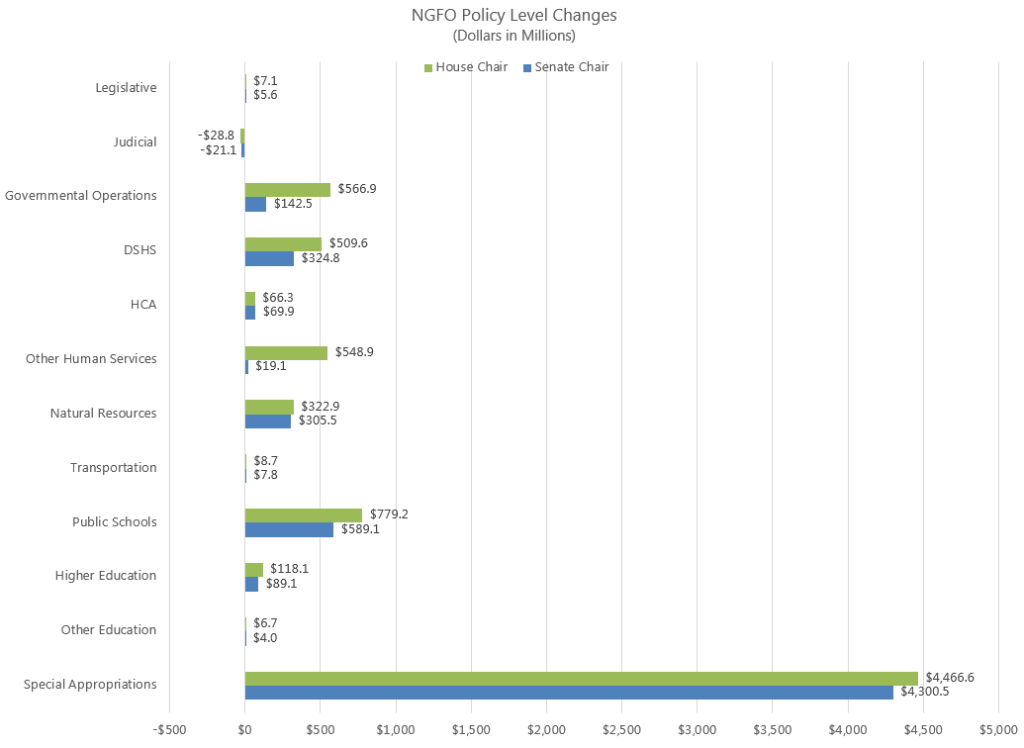4:25 pm
February 21, 2022
As I wrote earlier, the Senate chair’s budget proposal would increase 2021–23 appropriations from funds subject to the outlook (NGFO) by $4.681 billion and the House chair’s budget would increase NGFO appropriations by $6.216 billion.
Those amounts are net of maintenance level savings and new policies. The maintenance level (the cost of continuing current services, adjusted for enrollment and inflation) is estimated to decrease by $1.156 billion in 2021–23 in both budget proposals. (Through 2023–25, the maintenance level is expected to be down $2.108 billion.) The Senate chair’s budget would add $5.837 billion in new policies and the House chair’s proposal would add $7.372 billion in new policies. The chart compares policy level NGFO changes in the two proposals, by budget area.

Obviously most of the action occurs in special appropriations. In the Senate chair’s proposal, that budget category includes:
- $2.0 billion for the multimodal account
- $500.0 million for the strategic enterprise resource planning technology account
- $400.0 million for the school seismic safety grant account (SSB 5933)
- $350.0 million for the paid family and medical leave insurance account
- $217.0 million for a liability account cash deficit
- $157.5 million for the judicial stabilization trust account
- $125.0 million for the community reinvestment account (E2SSB 5796)
- $100.0 million for the salmon recovery account
In the House chair’s proposal, special appropriations include:
- $2.0 billion for the transportation budget
- $737.0 million for a new capital community assistance account
- $397.0 million for the paid family and medical leave insurance account
- $300.0 million for the Washington student loan program (E2SHB 1736)
- $217.0 million for the liability account
- $125.0 million for the community reinvestment account (2SHB 1827)
- $68.0 million for the judicial stabilization fund
In other human services, the major difference between the two is in the Department of Health. NGFO policy changes for the Dept. of Health are $48.4 million in the Senate proposal and $346.2 million in the House proposal. However, including all funds, the Senate would appropriate more for the Dept. of Health. For example, the House would appropriate $298.3 million from the NGFO for COVID response and vaccines, while the Senate would appropriate $256.2 million of federal relief for that purpose.
In governmental operations, the major difference is in the Department of Commerce. The House would appropriate from the NGFO $55.0 million for rental assistance, $50.0 million for broadband assistance, and $150.0 million for utility assistance.
(I’ll write about how each budget would use federal COVID relief in another post.)
Categories: Budget.Tags: 2021-23 , 2022supp
